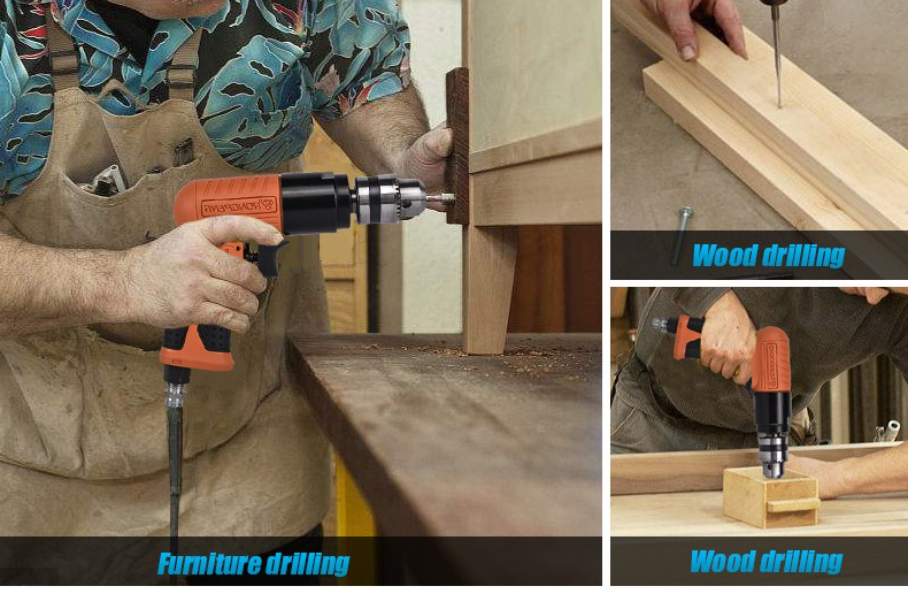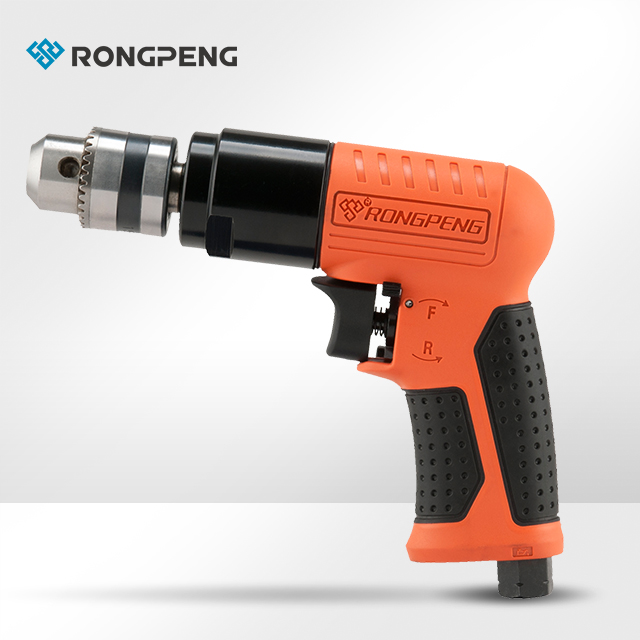

An Air Drill Is A Powerful Tool That Can Make Many Jobs Easier, But Like Any Tools, It Requires Caution And Proper Technique To Use Safely.
The first step is selecting the right air drill for the job. Consider the size of the holes you need to drill and the material you'll be drilling into. A lighter-duty air drill is sufficient for drilling into wood or soft metals, while masonry and steel require a more heavy-duty drill. Make sure to pick a drill with enough power - expressed in torque rating - for the intended tasks. Also ensure the drill accepts the right size of bits needed for your projects.
Using a bit made from the wrong material can cause the bit or the material you're drilling to break. You can use a general-purpose bit on most wood; a masonry bit for stone, brick or concrete; an HSS (high speed steel) bit on most metals; and a carbide or diamond-tipped bit on very hard, brittle surfaces such as porcelain, glass, or glazed tiles.

Wear safe clothing and eye protection. Avoid baggy clothing or dangling jewelry that could catch in the drill as you lean over it. Wear safety goggles or glasses that cover the sides of your eyes, to protect them from flying debris.2. Wear ear protection if drilling regularly. A handheld electric drill produces about 90 decibels, which is just enough to cause hearing damage after prolonged exposure.
Most air drills are quiet enough that hearing protection is not necessary. Impact drills (hammer drills) are the loudest handheld drills, producing over 100 dB. Hearing protection is recommended whenever using them.
Protect your lungs when necessary. If the project kicks up a lot of dust, wear breathing protection. A dust mask is only good for short-term comfort. Use a respirator if you drill regularly or for long periods of time, or if the material you are drilling is a known respiratory hazard. Each respirator is rated for certain types of hazards. Make sure the one you use is suited to your project.
There are many specialized bit designs, so consult the RONGPENG drill manual if you're not sure which bit to use. When drilling a hole for a screw, there's an easy way to find the right size bit. Hold the screw up directly behind the bit. The bit should hide the shaft of the screw from view, but the screw threads should still be visible on both sides
Fit the drill bit firmly into the chuck. The chuck is the clamp in the "jaws" of the drill. This holds the drill bit in place as it spins. To replace a drill bit, make sure the drill is off (and unplugged if corded), then loosen the chuck by rotating it. Depending on the drill, you may be able to do this by hand, or you may need a chuck key located in a compartment in the top or handle of the drill.
Insert the drill bit into the chuck, then tighten again. Make sure the bit is straight and secure, and remove the key before you turn on the drill. Each chuck has a maximum size. Most drills made for home use in the world have a chuck of size 1/4", 3/8", or 1/2". The shaft of the drill bit must be smaller than this size (but the tip can be larger). Run the drill and watch the bit spin in the air. If it wobbles from side to side (or looks like a blurry cone), the bit is bent or not secured correctly. Discard bent bits, since they can easily break during drilling.
Clamp small pieces together. If you are drilling into a small, loose piece, clamp it down firmly before you drill. Do not hold the piece down with one hand while drilling, as the drill could slip and injure you.
After each use, clean the drill bits and the drill itself to remove any debris or dust that may have accumulated during use. Check the drill bits for wear and tear, and replace them as needed. Lubricate the drill's moving parts, such as the chuck and the gears, with a light machine oil or lubricant. This will help to reduce wear and tear on the drill and ensure smooth operation next time.

RONGPENG RP17101 Revisible Air Drill is top choice for sevice works require a compact low profile application, precision machined gearing ensures maximum power transfer and durability, rear exhaust directs air away from workplace convenuent one hand push button forward/reverse. Lightweigh helps avoid fatugue during prolonged use, variable speed throttle for east starts.
Model No.: RP17101
Free Speed:1800 RPM
Sug.Air Comp: 2HP
Overall Length:6.69"(170mm)
Air Inlet(NPT):1/4"
Air Hose(ID):3/8"
Avg.Air Consumption:4cfm(114l/min)
Net Weight:0.94kg
View More About RONGPENG Air Tools.
If you need product quotation service, please contact: Rongpeng@Rongpeng.Com